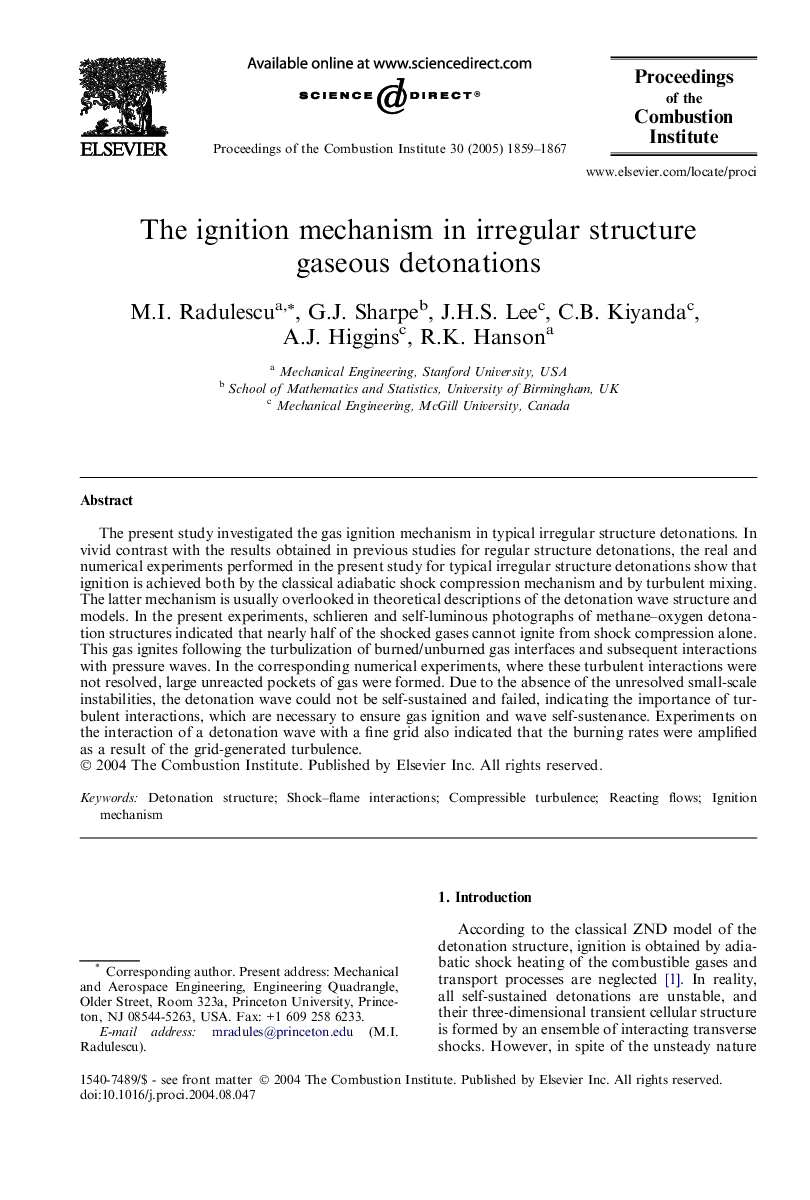| Article ID | Journal | Published Year | Pages | File Type |
|---|---|---|---|---|
| 240926 | Proceedings of the Combustion Institute | 2005 | 9 Pages |
The present study investigated the gas ignition mechanism in typical irregular structure detonations. In vivid contrast with the results obtained in previous studies for regular structure detonations, the real and numerical experiments performed in the present study for typical irregular structure detonations show that ignition is achieved both by the classical adiabatic shock compression mechanism and by turbulent mixing. The latter mechanism is usually overlooked in theoretical descriptions of the detonation wave structure and models. In the present experiments, schlieren and self-luminous photographs of methane–oxygen detonation structures indicated that nearly half of the shocked gases cannot ignite from shock compression alone. This gas ignites following the turbulization of burned/unburned gas interfaces and subsequent interactions with pressure waves. In the corresponding numerical experiments, where these turbulent interactions were not resolved, large unreacted pockets of gas were formed. Due to the absence of the unresolved small-scale instabilities, the detonation wave could not be self-sustained and failed, indicating the importance of turbulent interactions, which are necessary to ensure gas ignition and wave self-sustenance. Experiments on the interaction of a detonation wave with a fine grid also indicated that the burning rates were amplified as a result of the grid-generated turbulence.
